Keeping my head down, I made my way to the rear of the car. The trunk opened conspicuously, and I quickly set up my camera, not even looking up to see if my intended subject was still in view. It was, and seemed to regard me with only mild curiosity. My prior photo opportunities with Cooper's Hawks have usually been from some distance.
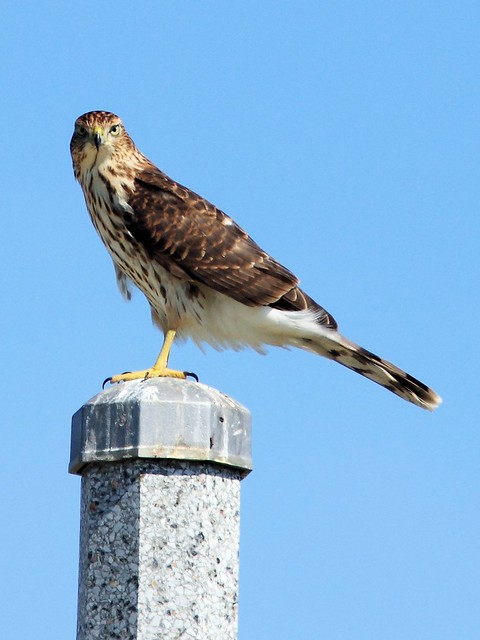
Although this immature bird lacked the red eyes of an adult, it looked fierce enough.
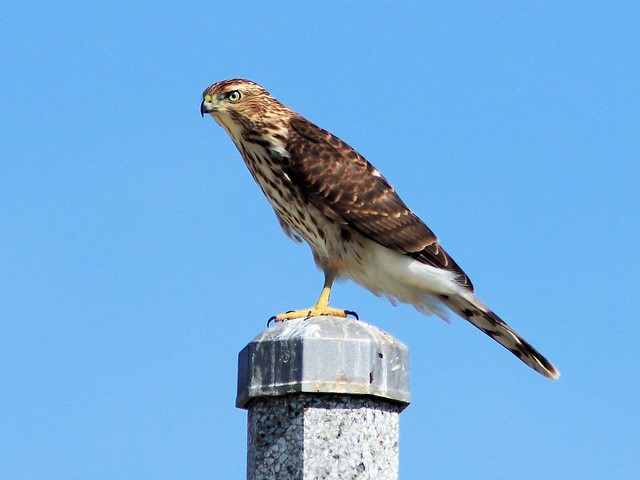
At first it tolerated my presence, but as I moved closer for a better shot, it departed.
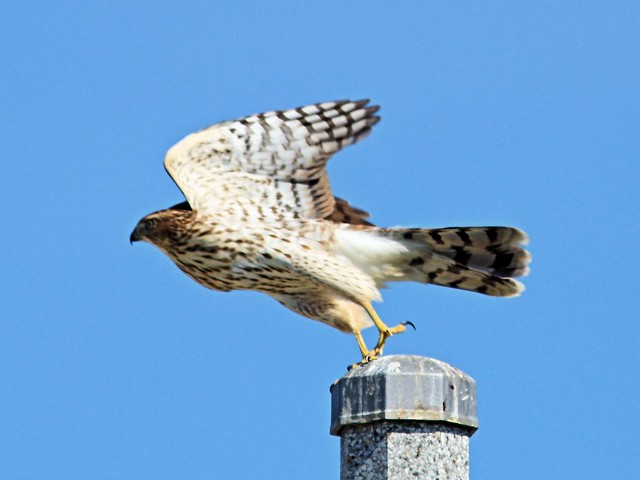
When we first started spending summers in Chicagoland, there was a Cooper's Hawk nest in a small woodland near our daughter's home. It was easy to see before the trees leafed out, but I have not been able to find it for the past two seasons.

The hen sat firmly during incubation.
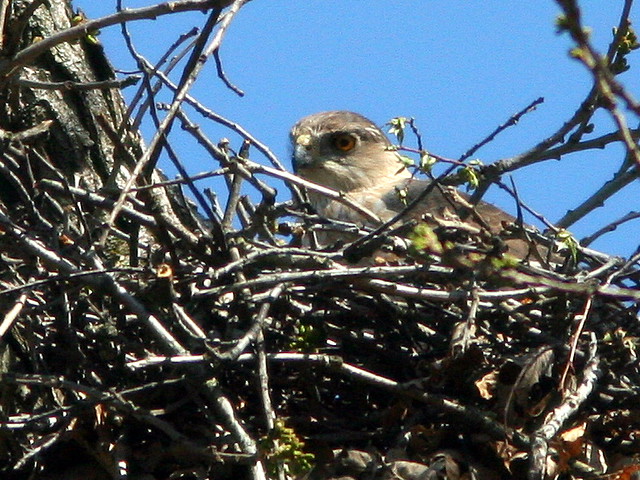
The adult's appearance is quite different from that of the streaked juvenile. The reddish streaks on the adult's breast are arranged transversely as opposed to the heavier longitudinal streaks of the immature bird, which may take two years to fully molt into adult plumage.
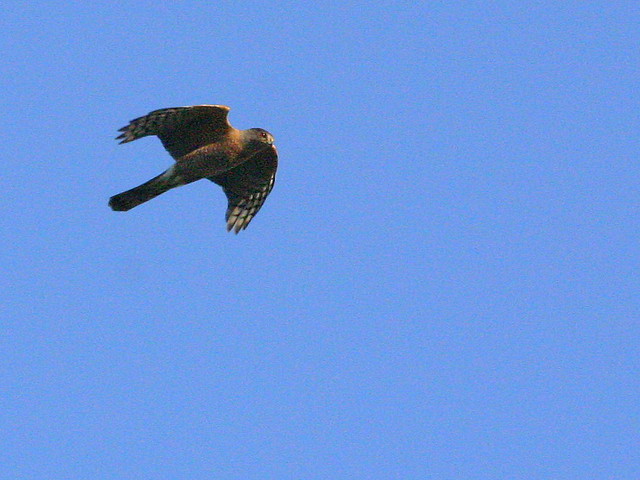
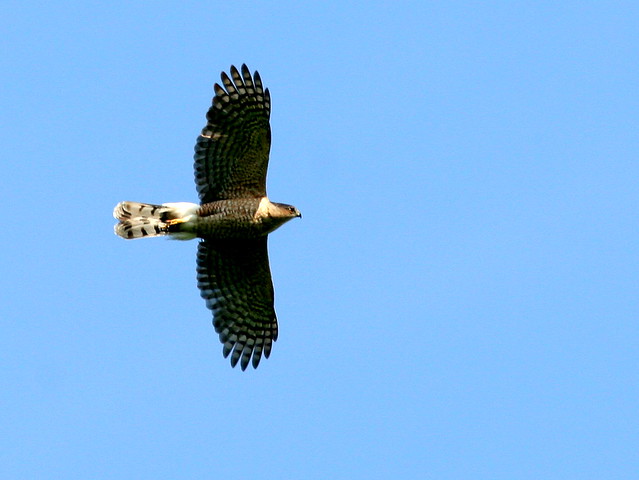
Cooper's Hawks characteristically roost on a tree or post, and then fly speedily to capture their prey, mostly smaller birds.
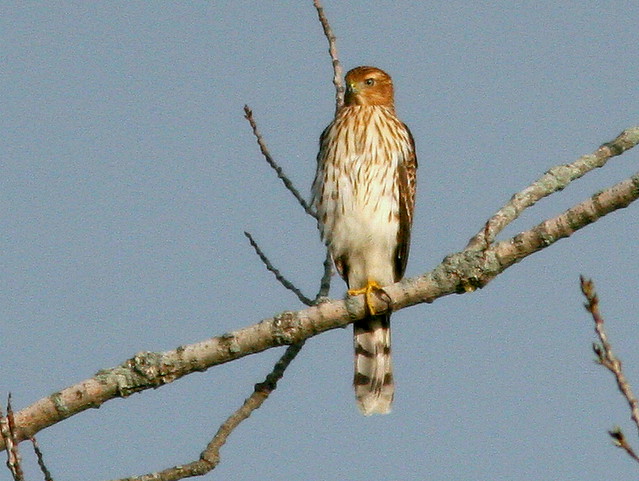
Cooper's Hawks also hunt by circling overhead. I witnessed this one "kiting," stalling in one place while facing into the wind. The stable position surely helps them detect movement below. These poor photos were taken from a great distance.


The hawk suddenly dove down into the high grass and successfully captured a bird.

Near our Florida home, this Cooper's Hawk hunted by flying along the trail at a very low altitude, using the element of surprise. This one flew off with its catch before I could get very close.
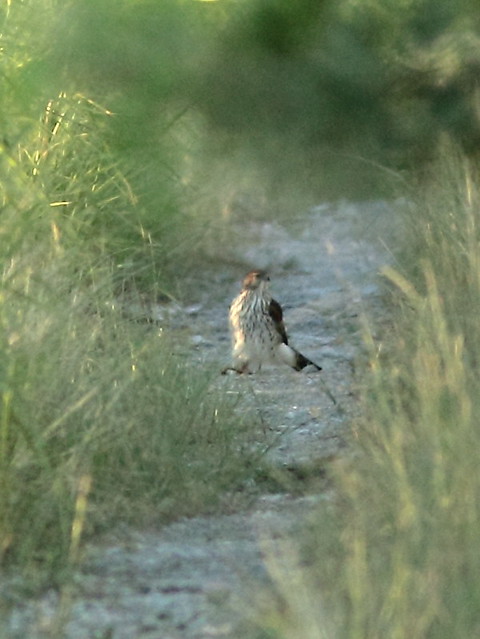
The smaller but similar Sharp-shinned Hawk has a proportionately smaller head and usually a squared-off tail.
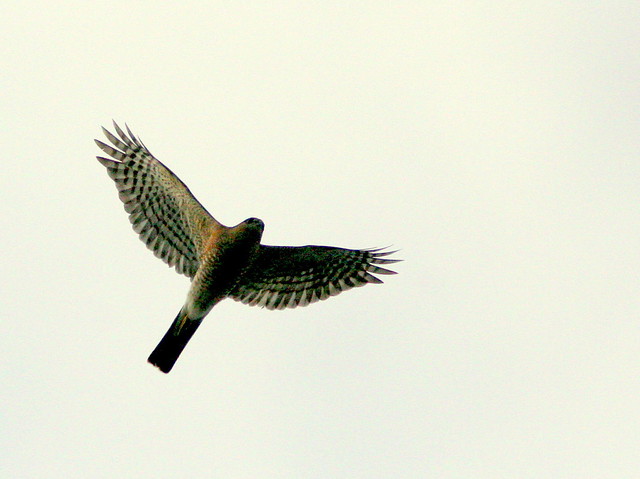
wow! just awesome! i love these gorgeous raptors!
ReplyDeleteAwesome shots and a gorgeous raptor!
ReplyDeleteHI Ken What a wonderful post with great series of shots of this raptors.
ReplyDeleteWhat a magnificent bird!!! And such awesomeness with your photographs.
ReplyDeleteHow wonderful! It's a very handsome bird.
ReplyDelete